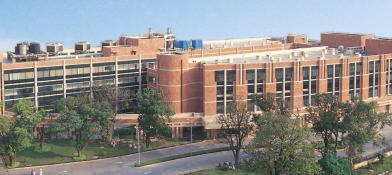About Robotic Surgery
What is Robotic Surgery
In the advancing landscape of medical technology, robotic surgery has emerged as a beacon of promise and possibility. This cutting-edge advancement has swiftly captured the attention of the surgical profession, heralding a new era of minimally invasive procedures and precision. Robotic surgery has already demonstrated its immense potential, particularly in complex procedures where traditional surgical approaches face limitations.
Understanding Robotic Surgery
A surgical robot stands as a remarkable fusion of technology and surgical expertise. These self-powered, computer-controlled devices are meticulously designed to assist surgeons in executing intricate procedures with unparalleled precision. Contrary to popular misconceptions, these systems do not operate autonomously. Instead, they serve as master-slave manipulators, acting as remote extensions of the surgeon’s hands. This nuanced partnership between human skill and robotic precision defines the essence of modern robotic surgery.
Differences Between Robotic and Traditional Open Surgery
- Incision Size: Robotic surgery utilizes small incisions compared to the larger incisions of traditional open surgery.
- Minimal Tissue Disruption: Surgical instruments in robotic procedures require less space to operate, reducing the need to remove muscle tissue and organs.
- Access to the Surgical Site: Surgeons access the surgical site through these smaller incisions, a departure from the larger openings in traditional surgery.
Types of Robotic Surgeries in Different Specialties
Robotic surgeries help overcome laparoscopic and thoracoscopic limitations, achieving precision in complex procedures in a minimally invasive manner. Its diverse applications across specialties redefine modern surgical practices.
- Cardiology: Robot-assisted techniques enhance precision in mitral valve surgeries, reducing recovery times and hospital stays.
- Urology: Prostatectomies benefit from robotic assistance, with reduced blood loss and faster patient recovery.
- Gynecology: Hysterectomies performed robotically lead to smaller incisions, less pain, and shorter hospital stays.
- Gastroenterology: Robotic systems aid in colon surgeries, improving outcomes and offering less invasive options for patients.
- Thoracic Surgery: Robotic approaches enable precise lung resections and thymectomies, reducing post-operative complications.
- Neurosurgery: Brain tumor resections with robotic assistance offer improved precision, particularly in delicate areas of the brain.
- Orthopedics: Joint replacement surgeries benefit from robotic precision, leading to better alignment and longevity of implants.
- Otolaryngology (ENT): Robotic systems aid in delicate procedures like throat surgeries, offering better outcomes and reduced risks.
- Plastic Surgery: Facial reconstructions benefit from robotic precision, allowing for intricate procedures with minimal scarring.
Benefits of Robotic Surgery
- Faster Recovery Time: Robotic surgery offers a less invasive approach, leading to a quicker patient recovery. Patients often experience shorter hospital stays, reduced time in the intensive care unit, and a faster return to their daily activities.
- Enhanced Patient Outcomes: Patients undergoing robot-assisted procedures benefit from decreased blood loss, lower rates of blood transfusions, and less post-operative pain.
- Improved Patient Comfort: With the less invasive nature of robotic surgery, patients often require less pain medication post-operatively. It not only enhances patient comfort but also contributes to a smoother recovery process.
- Greater Precision and Accuracy: Surgical robots assist surgeons in performing procedures with unparalleled precision. This level of accuracy can lead to better surgical outcomes, especially in delicate operations such as cardiac surgeries and thoracic procedures.
- Reduced Risk of Complications: Robotic surgery’s minimally invasive approach reduces the risk of complications during and after the surgery, including a lower risk of infections and other post-operative issues.
- Significant Benefits to Surgeons: Surgeons performing robotic procedures can do so in a seated position, reducing strain on their bodies. It leads to fewer orthopedic injuries and may contribute to the longevity of their careers.
- Attractiveness to Patients and Hospitals: Hospitals offering robotic surgery services easily attract patients seeking the benefits of minimally invasive procedures. This, in turn, can contribute to the hospital’s reputation and competitiveness in the healthcare market.
Myths and Facts Around Robotic Surgery
Dispelling myths and facts about robotic surgery is crucial for patients and medical professionals to make informed decisions and enhance healthcare outcomes.
Future of Robotic Surgery
- Robotic surgery will feature flexible, snake-like arms capable of navigating blood vessels and natural orifices like a catheter.
- Augmented reality technologies will provide real-time feedback, enhance precision, and provide surgeons with a detailed map of the surgical field.
- Robotic systems will take on tasks like suturing, leveraging consistent and identifiable anatomy for precise execution.
- Advances in AI could lead to surgeon-less surgeries, with algorithms developed from analyzing thousands of surgical videos for replicable steps.
Robotic surgery stands at the forefront of modern medical innovation, offering precise, minimally invasive procedures across diverse specialties. As myths are dispelled and advancements continue, the future promises even greater capabilities, reshaping the landscape of surgical care for improved patient outcomes.
Our Team of Experts
View allMedical Procedures for Robotic Surgery
View allOur patient’s stories
View allRelated Specialities
Other Specialities
-
Explore Hospitals for Robotic Surgery
-
Explore Doctors for Robotic Surgery by Hospital




















